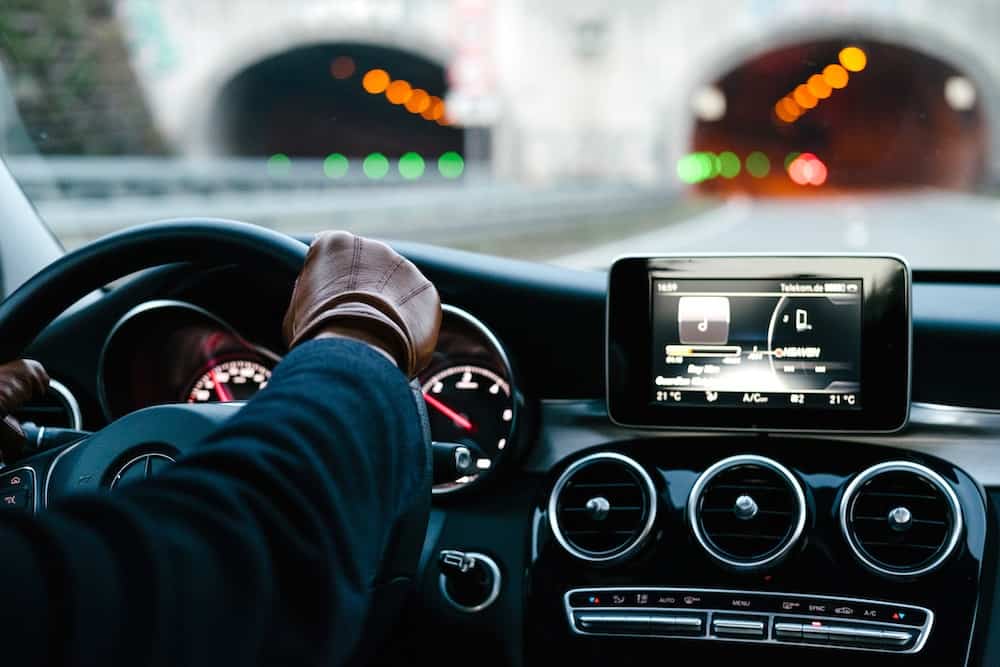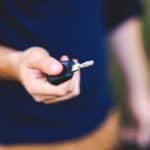Whether you are a new driver or have been driving for decades, sometimes your skills are a little stale, and you need to improve your driving.
Need to improve your driving? Read on for ten tips from pros to improve your driving today.
1. Remember your basics
Remember all of those ridiculous rules you learned to pass your driving test? It’s time to apply them in your daily driving. If you want to improve your driving, get back to the basics: use your signals, come to complete stops, use your mirrors, and practice steady and smooth stopping and starting habits at lights and stop signs.
2. Make it a habit to use your mirrors
All drivers experience tunnel vision, focusing on their thoughts rather than other drivers around them. Remember those shiny, reflective things on the sides of your car and hanging from your windshield? Yes, your mirrors. Get in the habit of using these to monitor traffic next to you and behind you. Your best defense against an accident is spotting and avoiding other drivers who are driving in an unsafe manner.
3. Don’t tailgate
The reasons you tailgate tend to revolve around impatience for other drivers’ speeds. The first rule about tailgating is that it doesn’t work. The person in front of you isn’t going to speed up or move over because you are eating their rear bumper, and you are in very real danger of a serious accident if something happens, and they need to stop abruptly. If you find yourself running late and tailgating routinely to “make up the time,” you need to re-evaluate the time you need to get to your destinations and leave a few minutes earlier. To improve your driving, remember the four-second rule: you should reach a point four seconds after the car in front of you does.
4. Expect the unexpected
Being aware of your world outside your car means always being ready for the unexpected. Pedestrians crossing mid-block, kids darting out in front of your car, and animals appearing suddenly are just a few examples of the unexpected. Likewise, other vehicles can stop suddenly, make unexpected turns without signals, or be parked in areas you don’t expect. Improve your driving by always being aware that the unexpected can happen. Busy city street? Look out for double-parked cars and pedestrians that cross in the middle of the block. Rural, suburban neighborhood? Watch out for kids and pets. Rural area? Deer, livestock and farm equipment can all pop up out of nowhere and really wreck your day…and your car.
5. Understand your headlights
If you want to improve your driving, you need to improve how you interact with cars around you. Headlight use is one example; blinding oncoming traffic with your high beams is just bad form.
- If you are driving in front of someone whose high beams are in your eyes, remember to flip the lever under your rearview mirror to deflect the light out of your eyes.
- High beams are ineffective in fog, rain or snow.
- Turn your eyes away from someone who is approaching you with high beams on.
- Remember to turn your high beams down if you are approaching someone.
High beams are also a way of communicating between drivers. Someone flashing their high beams at you could be indicating that you need to slow down for something up ahead, or that your own high beams are on and blinding them.
6. Prepare for the trip
One of the best ways to improve your driving is to be prepared for the trip before you even leave the driveway. Adjust the seat and mirrors, set your maps, and have everything you need within easy reaches, such as your water or coffee, in the console next to you. Turn off your phone alerts before you put the car in gear, so you aren’t tempted to glance at the phone while driving.
7. Consider a driving class
Keep your skills sharp by enrolling in a driving class. Defensive driving classes aren’t just for kids, they are for people of all ages who want to improve their driving. The best thing about defensive driving courses is that many auto insurance companies offer discounted rates for people who successfully complete the courses.
8. Don’t be an aggressive driver
Aggressive drivers aren’t just a nuisance, they are a danger to themselves and everyone else on the road. At best, aggressive drivers tailgate, honk, and gesture but at worst, their behavior will escalate into a road rage incident. The best way to deal with these drivers is to get out of their way as soon as possible.
Additionally, don’t look at them or engage them and should you be involved in an accident with them, do not leave your car until help arrives. If you are an aggressive driver, be aware that your habits will eventually cause an accident. Improve your driving by stopping these risky, overly aggressive behaviors.
9. Minimize the distractions
Everyone knows that using a hand-held cell phone while driving is a no-no. Put the phone in your glove box or somewhere else where it is out of mind, and out of your reach. If you must make a call or text, pull over to do it. Be aware, though, there are other distractions to minimize, like changing a CD or the radio station or arguing with someone in your car. To improve your driving, minimize your distractions so you can focus on the road and the other drivers around you.
10. Relax
If you really want the key to improving your driving, it’s this: relax. Driving doesn’t have to be nerve-wracking and stressful. Want to lessen your stress?
- Leave early to be on time: Your stress levels skyrocket if you are running late, especially if you’re in traffic
- Assume that no one else is a good driver: Just assume that no one can drive, and you’ll be ready for anything another driver does
- Save time by having everything you need in one place: Have your keys and anything else that needs to go with you in the car in one place, ready to grab on your way out the door
- Adjust your seat, mirrors, and radio before you turn the car on for maximum comfort
- Make sure the car is always in good repair, so you aren’t constantly worried about breaking down on the side of the road: This includes air in the tires and having enough gas
- Give your friends a good rough estimate of your arrival time, so you don’t feel crunched for time: “I’ll be there at 3” is very restrictive and stressful if you are stuck in traffic. “I’ll be there between 3 and 3:15” gives you room to breathe and relax.
Follow these simple tips to refresh your skills, be a safe driver, and improve your driving.



